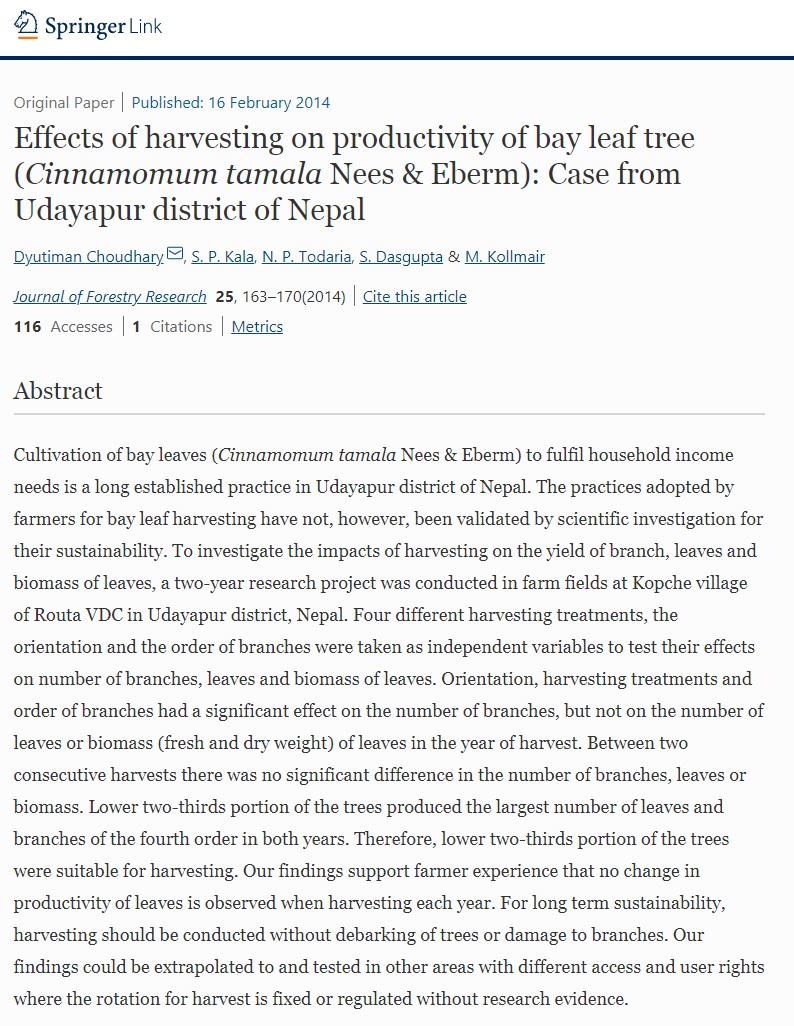
Cultivation of bay leaves (Cinnamomum tamala Nees & Eberm) to fulfil household income needs is a long established practice in Udayapur district of Nepal. The practices adopted by farmers for bay leaf harvesting have not, however, been validated by scientific investigation for their sustainability. To investigate the impacts of harvesting on the yield of branch, leaves and biomass of leaves, a two-year research project was conducted in farm fields at Kopche village of Routa VDC in Udayapur district, Nepal. Four different harvesting treatments, the orientation and the order of branches were taken as independent variables to test their effects on number of branches, leaves and biomass of leaves. Orientation, harvesting treatments and order of branches had a significant effect on the number of branches, but not on the number of leaves or biomass (fresh and dry weight) of leaves in the year of harvest. Between two consecutive harvests there was no significant difference in the number of branches, leaves or biomass. Lower two-thirds portion of the trees produced the largest number of leaves and branches of the fourth order in both years. Therefore, lower two-thirds portion of the trees were suitable for harvesting. Our findings support farmer experience that no change in productivity of leaves is observed when harvesting each year. For long term sustainability, harvesting should be conducted without debarking of trees or damage to branches. Our findings could be extrapolated to and tested in other areas with different access and user rights where the rotation for harvest is fixed or regulated without research evidence.